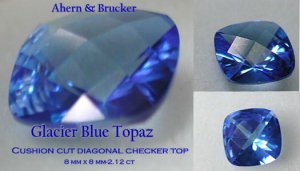innerkitten
Ideal_Rock
- Joined
- Aug 1, 2003
- Messages
- 5,623
----------------
On 5/1/2004 11:49:14 AM Colored Gemstone Nut wrote:
There have been some blue topaz that rival the blue seen in fine sapphires, but can be expensive compared to the more available commercial quality topaz../idealbb/images/smilies/21.gif
Colored Gemstone Nut Are the blue topaz which rival the blue seen in fine sapphires natural or treated to make them this blue?

----------------
On 5/1/2004 1:17:40 PM pyramid wrote:
----------------
On 5/1/2004 11:49:14 AM Colored Gemstone Nut wrote:
There have been some blue topaz that rival the blue seen in fine sapphires, but can be expensive compared to the more available commercial quality topaz../idealbb/images/smilies/21.gif
----------------
While it is possible for Topaz to come from the earth in a light blue color, almost all of it on the market today is treated to one degree or another as Val points out. It is a result of irradiating colorless or near colorless precious topaz. Nearly all blue topaz starts out white, but there are natural blues as well, though quite rare. The results can vary from a light to medium rich blue coloration that includes many different intensities of blue depending on what enhancement method is used.
I like the blue color present in glacier blue topaz and it reminds me of the blue seen in fine ceylon sapphires. Topaz which is surface treated is relatively inexpensive making replacement a practical solution if damage or chips occur over time.




